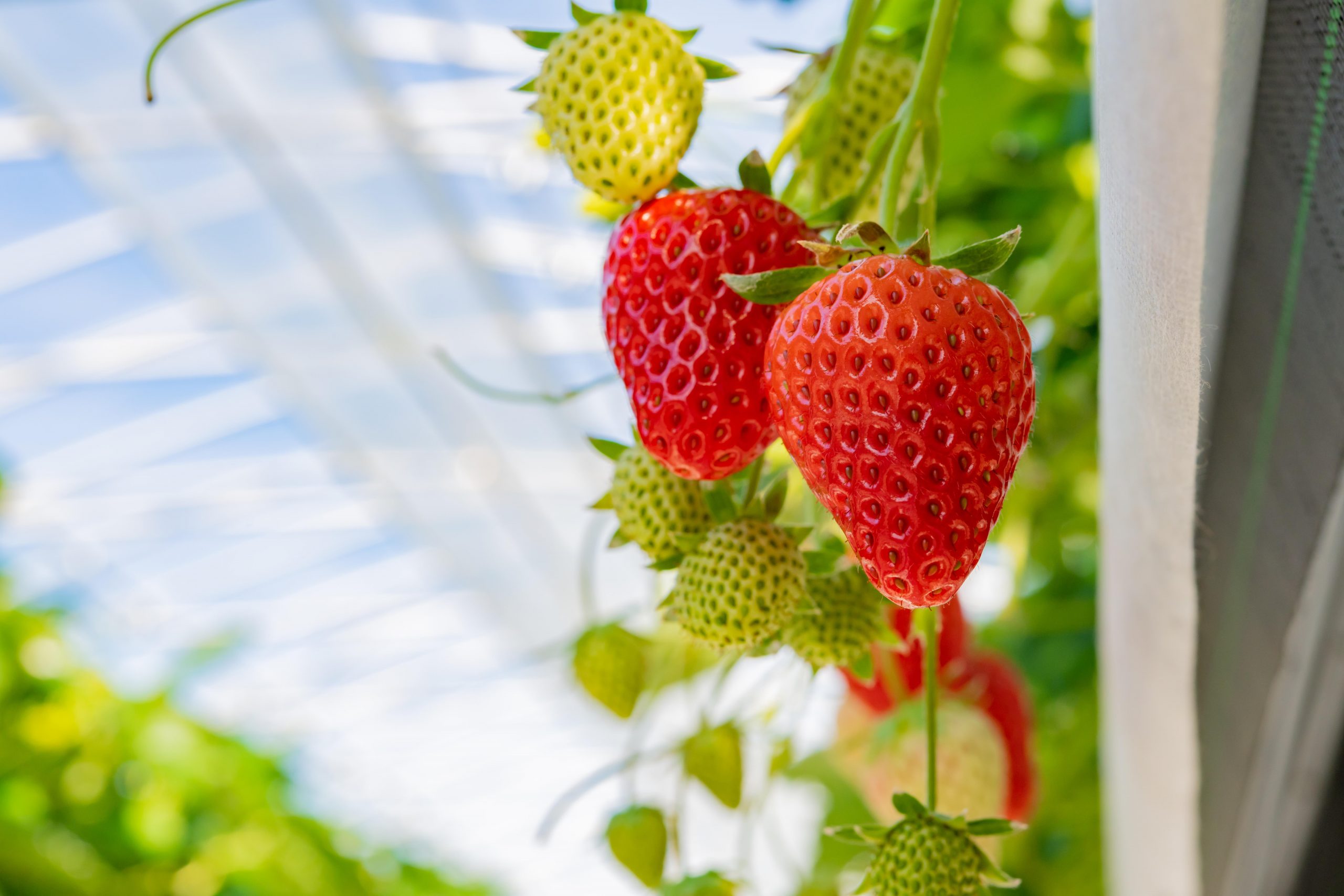Greenhouse Strawberry Production Recommendations
Consumers are demanding more local, year-round greenhouse grown berries, and growers have been quick to answer with increasing strawberry production in controlled environments. Strawberries can be complex to grow, but there are species that are well suited to indoor growing environments. Since greenhouse strawberries are grown in off-season, low light months (September-April), supplemental lighting is an important way to achieve consistent light levels for maximum production. Greenhouses can also offer a better growing environment in terms of controlling light, temperature, CO2 and other environmental parameters.
In this article, we cover the basics behind greenhouse strawberry production, and how supplemental lighting will be important for achieving optimal DLI (daily light integral) levels when natural light is low, as well as its importance for flower induction. Our research comes from firsthand experience having worked with some the largest greenhouse strawberry producers in North America, as well as leading-edge research in controlled environment strawberry production.
Strawberry Cultivars
There are two kinds of strawberry cultivars, June-bearing and ever-bearing.
June–bearing cultivars have a critical photoperiod and are short-day flowering plants. Flowering is initiated under daylengths of 8-13 hours and under cool temperatures. If day length or temperatures exceed the maximum, flower initiation stops.
Ever–bearing cultivars are known as facultative long day plants, and develop more flowers under long days, but will develop flowers regardless of daylength. Flowering can be initiated with supplemental lighting or night interruption lighting. Flowering is also affected by temperature, and will be suppressed if it exceeds 30 degrees Celsius. For most growers, ever-bearing varieties will make the most sense for greenhouse production.
Light Recommendations
Strawberries can produce fruit under low light levels, but it’s not optimal for high yield, high productivity greenhouses. DLI, which measures the amount of light received over a 24-hour period (measured in moles per meter squared per day), is a good way to guarantee your plants are receiving the recommended amount of light for achieving high productivity and yields.
It is recommended that growers target a minimum DLI of 12 mol/day, however for optimal productivity, it is recommended to target a DLI between 20-25 mol/day. Going above this limit can stress strawberry plants and productivity will be reduced. There has been research to suggest that strawberries show a steep diurnal decline of net photosynthesis, and that the morning hours are critical for promoting photosynthesis.
Temperature Recommendations
Managing temperature is important for controlling flowering of strawberry plants. Literature recommends keeping daytime temperatures between 68°F-75°F (20-24°C), exceeding this range may limit flower initiation and stress plants. Strawberry plants require lower nighttime temperatures to produce high quality fruit. In general, fruit size increases at lower temperatures, and sugars and flavour also improve when plants are grown at low night temperatures, between 50°F-54°F (10-12°C).
Humidity Management
Strawberry plants tend to be sensitive to humidity. In dry environments, low humidity may become an issue and cause the physiological disorder tip burn/calyx. Tip burn is a calcium deficiency in the leaves and is caused when plants are transpiring a lot, and the calcium is going mostly to the leaves and not to the developing tips/shoots.
Research suggests that implementing a minimum 3 hours of high humidity at night, around 90-95%, is needed to avoid tip burn. This helps to slow down transpiration rates and allows calcium to reach the growing tips. After this high humidity period, humidity should be lowered to dry plants out and help prevent foliar diseases. Daytime humidity levels should be between 40-60%.
CO2
CO2 enrichment is useful for enhancing photosynthesis when light levels are low and when vents are closed, which is usually in the winter months. Since CO2 can drastically fall during these times, supplementing with CO2 (with concentrations around 1000-1500ppm), can be useful for increasing yields and overall plant productivity.
What kind of lighting should I use?
LED luminaires could be a great option for strawberry production. Because of their low heat load and more targeted spectrums, they’re good for growing strawberries, we have seen great success with using LED luminaries for strawberries production. If you’d like to order a sample to test, please contact us by email: hi@ledgrowlight.co

